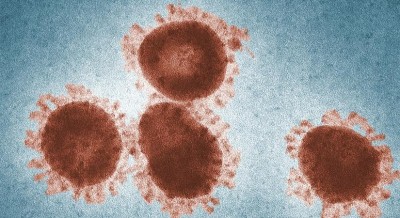
New Delhi, Although India has, for a long time, battled the incidence of cancer, latest estimates pegs them to be rising at significantly higher rate. Once thought of as an old age disease, cancer is now a cause of concern also among the youth and children.
National Cancer Awareness Day is observed every year on November 7 in India, to increase awareness about cancer prevention and the need for its early detection.
According to the Indian Council of Medical Research (ICMR), there will be an estimated 12 per cent rise in cancer cases in India in the next five years.
Longer life expectancy is a major contributor to the overall cancer incidence. As people grow old, their bodies have longer time to allow faults to build up and the body accumulates more of these faults in the genes, considerably increasing the risk of cancer.
"Larger proportion of older individuals is the first cause of increased cancer numbers. The higher the proportion of older age in the population, the higher is the chance of cancer," Wesley M Jose, Clinical Associate Professor, Medical Oncology, Amrita Hospital, Kochi, told IANS.
Further, males (52.4 per cent) are more prone to the risk of all cancer cases compared to females (47.4 per cent). Tobacco use is the major reason -- comprising 48.7 per cent of cancers among males and 16.5 per cent among females.
A recent report states that the number of cancers associated with tobacco use in 2025 would be 4,27,273 -- contributing to 27.2 per cent of India's total projected cancer cases. Initiation of tobacco, known to contain at least 69 cancer-causing agents, in the youth is a contributory factor to the increased burden of cancers associated with tobacco use in India.
"Tobacco cessation will reduce the cancer burden by about 25 per cent. The major contributing factor being tobacco and ghutka consumption that directly accounts for 27 per cent of cancers in India," Murad E. Lala, Oncologist at P.D. Hinduja Hospital & MRC, Mahim, Mumbai, told IANS.
"We all know that oral and lung cancer that affects our male population to the maximum can be prevented by curbing smoking and tobacco consumption. We need to start thinking of some unhealthy foods similar to what we think about tobacco -- unnecessary, addictive, and harmful," said Anil Heroor, Director-Advanced OncoSurgery Unit, Fortis Hospitals Mumbai.
Apart from tobacco, alcohol, obesity, a sedentary lifestyle and environmental factors also contribute to the increase in cancers.
"The overall living circumstances of the Indian population have improved and that have also led to a larger sedentary workforce, which has access to a high-calorie diet. These factors indirectly have affected the rise in numbers," Jose said.
"Nearly six types of cancers are linked to obesity and are slowly on the rise among people under 50. These are cancers of the colon or rectal, pancreas, kidney, gallbladder, uterine (also called endometrial cancer), and multiple myeloma. These Cancers are often not discovered in younger people until the disease is advanced and harder to treat," Heroor said.
Childhood cancer is also seeing an increasing trend, mainly of leukemia and lymphomas. Childhood (0-14 years) cancers constitute 7.9 per cent of all cancers, according to ICMR.
"The common types of cancers in children are leukemias, lymphomas, CNS tumours, retinoblastomas and Wilm's tumours. While most of the childhood cancers are curable if detected early and treated appropriately, children in India have limited access to tertiary centres that treat childhood cancers. This delay in treatment causes the survival rate to drop," Jose said.
The cancer burden in the country can be reduced by strengthening the government health systems, making universal health coverage, health education, treatment compliance, and early detection centres at the community level.
Besides, vaccination for virus-related cancer like liver and cervix, and improved physical activity, stricter tobacco and alcohol laws can also help, the experts suggested.


.jpeg)

